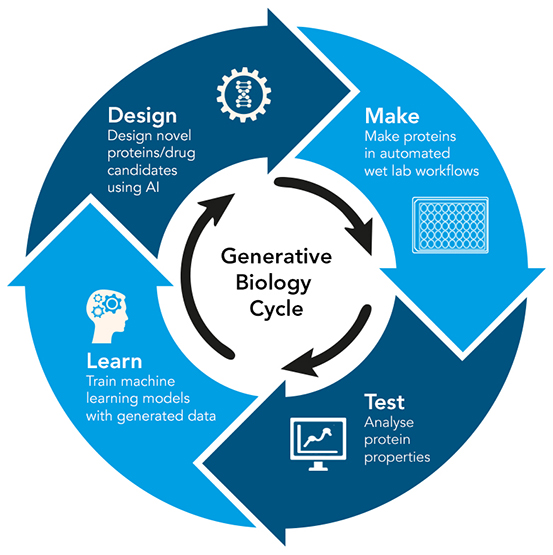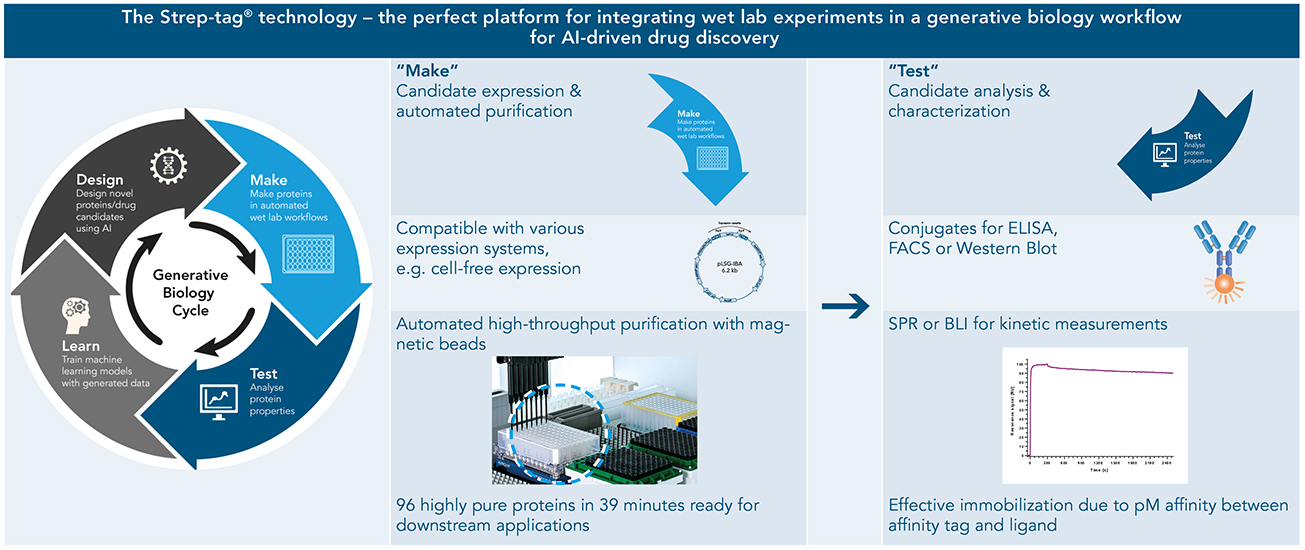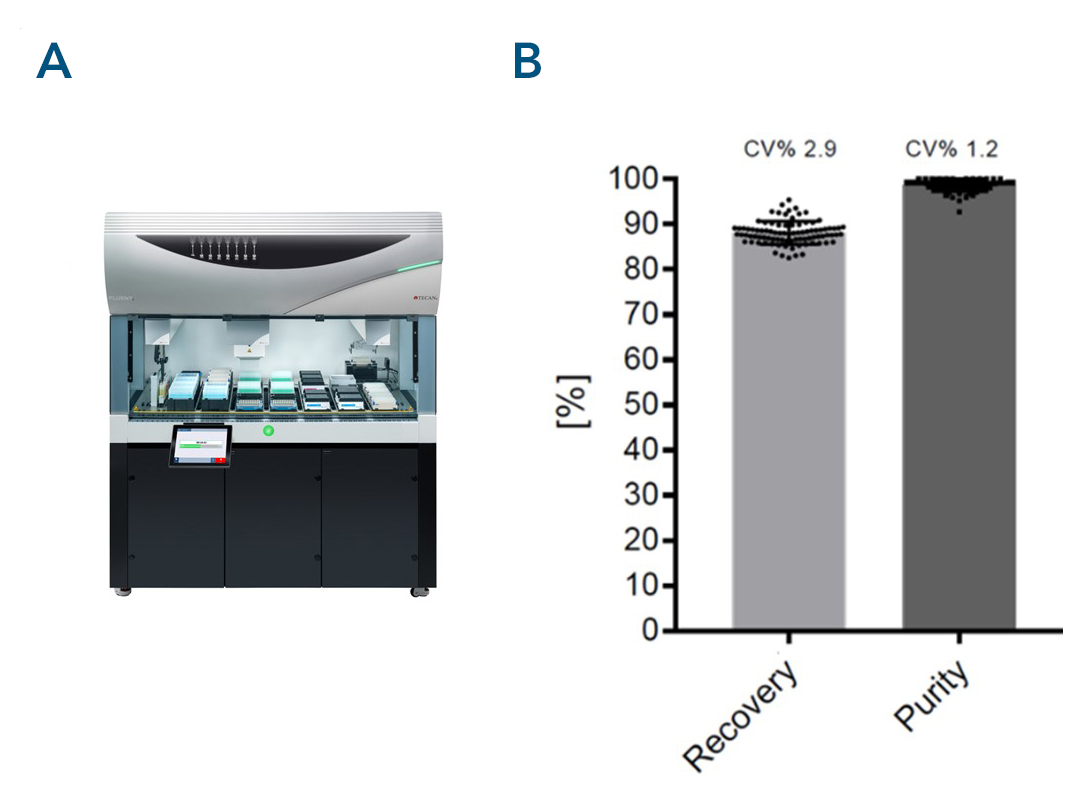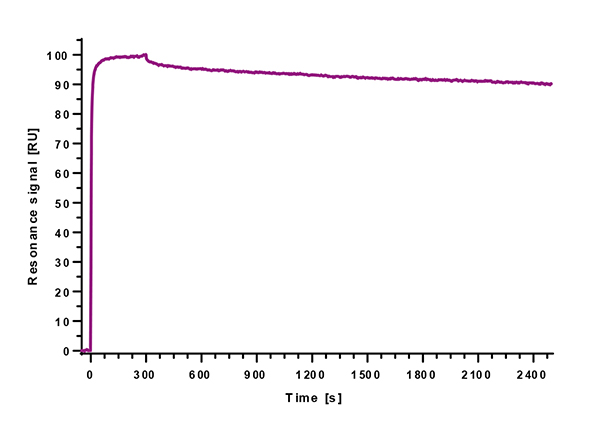AI-driven drug discovery

For effectively combining AI with synthetic biology, a system is needed that can keep up with the amount of predictions made by machine learning models and is suitable for automated procedures.
One system that fulfills these requirements is the Strep-tag® technology. This technology offers features that can greatly contribute to quickly generate high quality data required for AI/ML-driven drug discovery approaches and streamline the whole workflow:
- Simple & fast one step purification suitable for automated systems
- Outstanding target purity of >95%
- Specific binding & specific elution
- Superior affinity (pM) between Twin-Strep-tag® (affinity tag) and Strep-Tactin®XT (ligand)
Due to the outstanding target purity after automated one-step purification, a direct transition to downstream applications is possible. This enables the screening of >2000 candidates per week, significantly speeding up the drug discovery process.

The Strep-tag® in AI-driven drug discovery
High-throughput screening for AI-based drug discovery
"Make" - Expression & purification
Screening AI-predicted molecules for the desired characteristics is key for identifying the most promising drug candidates.
Ideally, all required data should be generated in a short time, while its quality remains unaffected. A first step in this screening process is the expression and purification of predicted proteins, for example antibodies or antibody fragments. A cell-free expression system can be advantageous here, due to its ease of use and rapid protein production. Subsequently, a robust automated purification system is needed that reliably delivers highly pure proteins. In combination with a suitable affinity tag, magnetic beads are a good choice in this case, since they can be used in robotic systems, are suitable for small scale purifications and generate consistent results.
Especially MagStrep® Strep-Tactin®XT beads, which specifically bind the Twin-Strep-tag®, are an ideal tool for candidate screening in AI-driven drug discovery due to the following features:
- Specific binding and elution
- Fast binding kinetics
- Fast processing of only 39 minutes
- Reliable one-step purification with outstanding purity
- Compatible with almost all magnetic systems
- Compatible with a vast array of additives
Automated protein purification with MagStrep® Strep-Tactin®XT beads - consistently high recovery & purity

Figure 1. Automation and parallel protein purification with MagStrep® Strep-Tactin®XT beads were tested using a Tecan Fluent® (A). αCD45 nanobody fused to a Twin-Strep-tag® was purified in parallel from 88 samples. Consistently high recovery and purity was achieved across all samples.
"Test" - Analysis
After successful purification of drug candidates, further analysis steps are required to determine the specific properties of a protein. The use of the same affinity tag as used for purification can be advantageous, since the amount of required tags is reduced, keeping the impact on the target protein as minimal as possible. Due to the picomolar affinity of the Twin-Strep-tag® to its ligand Strep-Tactin®XT, this system not only enables efficient purification with high yield and purity, but also further downstream analysis such as ELISA or western blot. Due to the effective immobilization of tagged protein, even kinetic measurements via e.g. SPR or BLI are possible. This way, purified proteins are easily transitioned to further analysis steps and no change in affinity tag system is required.
SPR measurement using a Twin-Strep-tag® protein bound to Strep-Tactin®XT – effective immobilization for affinity measurements

Figure 2: SPR chips coated with Strep-Tactin®XT were used for immobilizing a CD45 nanobody tagged with Twin-Strep-tag®. The results show that with Strep-Tactin®XT the nanobody is bound stably over a long-period of time. These data demonstrate that Strep-Tactin®XT can be used to analyze high-affinity interactions with slow dissociation rates.

